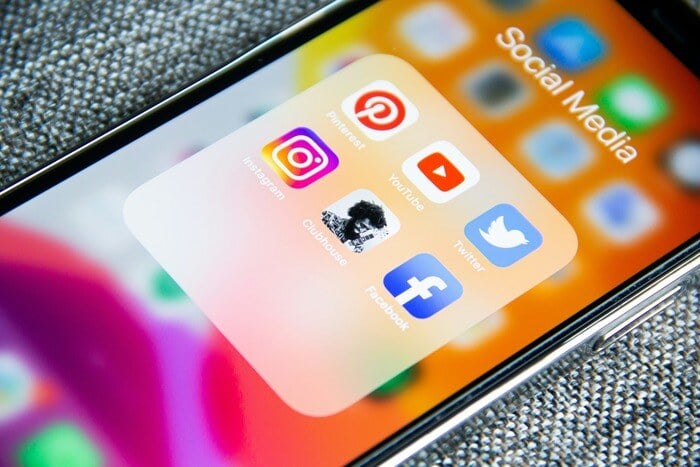Essential healthcare PR strategies for 2025
 On 26 July, 2025
On 26 July, 2025

Healthcare public relations is evolving rapidly in the face of technological advancements and increasing public scrutiny. in 2025, healthcare organizations must adapt their PR strategies to build trust, foster transparency, and effectively engage with their audiences in a more personalized, patient-centered way. By leveraging emerging digital channels, combating misinformation proactively, and prioritizing authentic storytelling, healthcare PR professionals can navigate this complex landscape and position their organizations as credible, caring leaders in the industry.
Summary:
Understanding the healthcare PR landscape
Key differences from general PR
The highly regulated nature of the healthcare industry significantly shapes its public relations practices. Unlike general PR, healthcare communicators must navigate a complex web of laws and regulations.
This regulatory environment necessitates close collaboration between PR professionals, legal teams, and medical experts to ensure all communications are compliant and scientifically accurate. Furthermore, the sensitive nature of health information and the potential impact on public well-being demand a higher level of ethical scrutiny in messaging. While creativity is important, it must be balanced with a commitment to transparency, accountability, and avoiding even the appearance of misleading claims - standards not always required in other industries. These factors combine to create a unique communications landscape that prioritizes clarity, credibility, and responsibility above all else.
Current trends shaping healthcare communications
The healthcare industry faces significant communication challenges. Patients increasingly expect convenient, personalized care experiences, while the proliferation of health information online has led to the spread of misinformation. At the same time, the COVID-19 pandemic exposed gaps in care access and highlighted the importance of clear, timely public health messaging.
Several emerging trends offer potential solutions to these challenges. The rise of telemedicine is making healthcare more accessible and convenient for patients, allowing them to connect with providers remotely via video or phone consultations. Healthcare organizations are also harnessing artificial intelligence to enhance everything from triaging patients to delivering more personalized care recommendations based on individual health data.
Another key trend is the increased focus on mental health. The pandemic took a major toll on emotional well-being, normalizing conversations around mental health and driving demand for services. In response, more healthcare providers are integrating behavioral health screenings and treatments into primary care. Digital mental health tools like therapy apps are also gaining traction as a way to expand access to support.
As healthcare communications continue to evolve, organizations will need to stay on top of these trends to meet the changing needs and expectations of the patients they serve. By leveraging technology, prioritizing convenience and personalization, and taking a more holistic view of health, the industry can more effectively engage and support individuals on their health journeys.
Building trust through transparent communication
Crafting clear, jargon-free messaging
When communicating complex medical information to the general public, it's essential to first identify the key points you want to convey. Focus on the core message and strip away any unnecessary details that could distract or confuse readers.
Next, replace technical jargon and medical terminology with plain language explanations. Use simple, everyday words and short sentences to make the content more understandable. Helpful techniques include using analogies to relate unfamiliar concepts to things people already know, and providing clear definitions for any essential medical terms that can't be avoided.
Visual aids like infographics, images and videos can also make complex information more accessible and engaging. Breaking content into short paragraphs with clear headlines helps make it more scannable and easier to digest.
Above all, put yourself in the audience's shoes. Have a non-medical professional review the content to flag any confusing points. With some thoughtful editing and polishing, even the most complex medical information can be made clear and comprehensible to the average reader.
Leveraging patient stories and testimonials
Sharing real patient experiences is a powerful way to connect emotionally with your audience and build trust. When done ethically, patient stories put a human face on health issues and make your messages more relatable.
However, leveraging patient stories requires sensitivity and care. It's critical to obtain full informed consent and be transparent about how the testimonial will be used. Patients should never feel pressured or exploited.
The key is finding a balance - highlighting authentic patient voices while respecting privacy and maintaining the highest ethical standards. Work closely with patients to ensure they are comfortable with what is shared. Allow them to review and approve any content featuring their story. By putting patients first and handling their experiences with integrity, you can harness the power of real stories to strengthen your healthcare PR efforts.
Addressing misinformation proactively
Misinformation about health topics spreads rapidly online, eroding public trust in healthcare organizations. To combat this, a proactive approach is essential.
Monitoring social media and news outlets allows you to quickly identify and address emerging myths before they gain traction. When misinformation is spotted, respond with clear, evidence-based facts from authoritative sources. Visual content like infographics can make your message more engaging and shareable.
However, simply reacting isn't enough. Consistently publishing accurate, easy-to-understand health content across your owned channels builds your reputation as a reliable information source. Partnering with respected medical experts and institutions further enhances your credibility. By coupling responsive myth-busting with a steady output of trustworthy information, you can inoculate your audience against false claims and solidify your position as a go-to health resource.
Maximizing digital channels for healthcare PR
Developing a strong social media presence
Social media platforms offer healthcare organizations a powerful way to connect with patients and professionals, build trust, and share important health information. However, a strong and compliant social media strategy requires careful planning.
Each platform has its own audience demographics, content formats, and best practices to consider. For example, visual content like infographics and short videos may perform best on Instagram, while Twitter is ideal for sharing real-time updates and participating in relevant healthcare conversations through hashtags. Understanding these nuances allows you to tailor your content for maximum impact.
At the same time, healthcare social media must navigate strict regulations around patient privacy, advertising, and reporting adverse events. Partner closely with your legal and compliance teams to develop clear social media policies. Train your social media managers on HIPAA guidelines, ensure all posted content is accurate and compliant, and establish protocols for handling patient inquiries or comments in a timely, professional manner.
By strategically leveraging the strengths of each platform while prioritizing compliance, you can cultivate an engaged social media community that amplifies your healthcare brand's reach and credibility.
Creating valuable health content
To create health content that resonates with audiences, focus on:
-
Educational articles and blog posts that explain complex medical topics in easy-to-understand language. Cover preventive care, common conditions, and the latest treatment options.
-
Patient stories that highlight real experiences and put a human face on health issues. These relatable narratives build trust and connection.
-
Visual content like infographics and short videos to make health information more engaging and shareable on social media.
-
Expert interviews with doctors and researchers to provide credible insights on trending health topics.
-
Interactive content such as quizzes and assessments that encourage audience participation and help personalize the health journey.
When distributing this content, utilize a multi-channel approach that includes your website, email newsletters, social media, and partnerships with health publications and influencers to maximize reach and impact. Consistency is key - aim to publish fresh, relevant content on a regular schedule to keep your audience engaged.
Optimizing for health-related searches
Expertise, authoritativeness, and trustworthiness (E-A-T) are key principles that search engines like Google use to evaluate the quality of web content, especially for healthcare websites. To optimize for health-related searches, organizations should focus on demonstrating their E-A-T through their online presence.
One effective way to showcase expertise is by having content written or reviewed by certified medical professionals. Listing author credentials and linking to their biographies helps validate their authority on the subject matter. Websites should also cite reputable medical sources and studies to back up any health claims made.
However, signaling E-A-T goes beyond just the content itself. Having a secure website (HTTPS), a clear privacy policy, and contact information builds trust with both users and search engines. Positive user engagement metrics like low bounce rates and long visit durations further reinforce a page's value and relevance.
Ultimately, the key to ranking well for health searches is combining SEO technical best practices with high-quality, authoritative content that comprehensively addresses users' needs. By keeping E-A-T at the forefront of their digital strategies, healthcare organizations can improve their visibility and build credibility with their online audiences.
As healthcare PR evolves in 2025, organizations must prioritize building trust, leveraging digital channels, and engaging audiences with authentic, patient-centered communication. By proactively addressing misinformation, showcasing expertise through thought leadership, and harnessing the power of data-driven insights, healthcare brands can navigate this complex landscape and solidify their position as credible industry leaders. Wiztrust's PR sofware, empowers healthcare communicators to streamline these efforts, simplify content creation and distribution, and build stronger relationships with key stakeholders. With the right strategies and tools, healthcare PR professionals can successfully adapt to the challenges ahead and make a meaningful impact on public health.


 6 min
6 min
